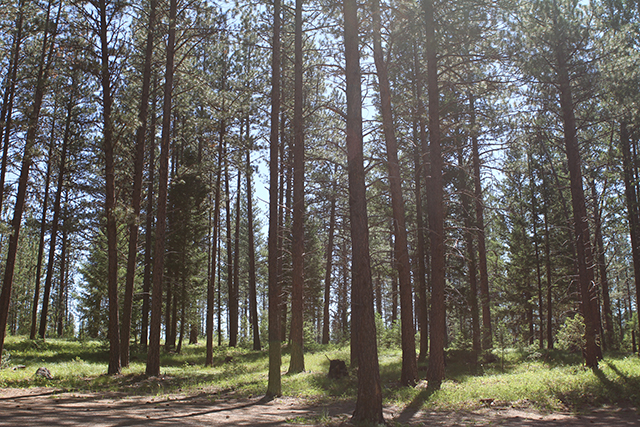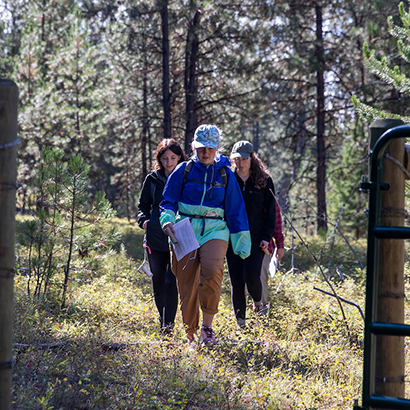Forest Resources
 Geology and Soils: Six broad rock types are found within Lubrecht forest: gravels; siltstones, sandstones and conglomerates; quartz monzonite; calcareous marble; quartzites and argillites; and several types of igneous dikes and sills. Soils on the forest belong to 23 distinct soil series and five soil series combinations.
Geology and Soils: Six broad rock types are found within Lubrecht forest: gravels; siltstones, sandstones and conglomerates; quartz monzonite; calcareous marble; quartzites and argillites; and several types of igneous dikes and sills. Soils on the forest belong to 23 distinct soil series and five soil series combinations.
Timber: There are four major timber types on the forest. Western larch and Douglas-fir are located on the north-facing slopes and ponderosa pine is dominant on south-facing slopes and the well-drained bottomlands. Lodgepole pine grows in dense, even-aged stands throughout the eastern portion of the forest. The timber is predominantly second growth, originating after logging and slash burning in the early part of this century.
Range: The forest is divided into five grazing units, four of which are grazed to a total capacity of 1,875 animal unit months. The fifth area is normally not grazed and is used for research projects where livestock grazing would be detrimental.
Wildlife: The Lubrecht Forest supports a wide range of birds and mammals. Over 30 species of birds and 36 species of mammals have been identified on the forest, including eagles, hawks, owls, elk, deer, moose, bobcat, coyote, black bear and mountain lion.
Recreation: Lubrecht Forest offers year-round recreational opportunities. The forest is open for hunting, fishing, cross-country skiing and general hiking. In cooperation with adjoining public and private landowners, the forest is involved in a variety of recreational programs and walk-in areas along the Blackfoot River Recreation corridor.
